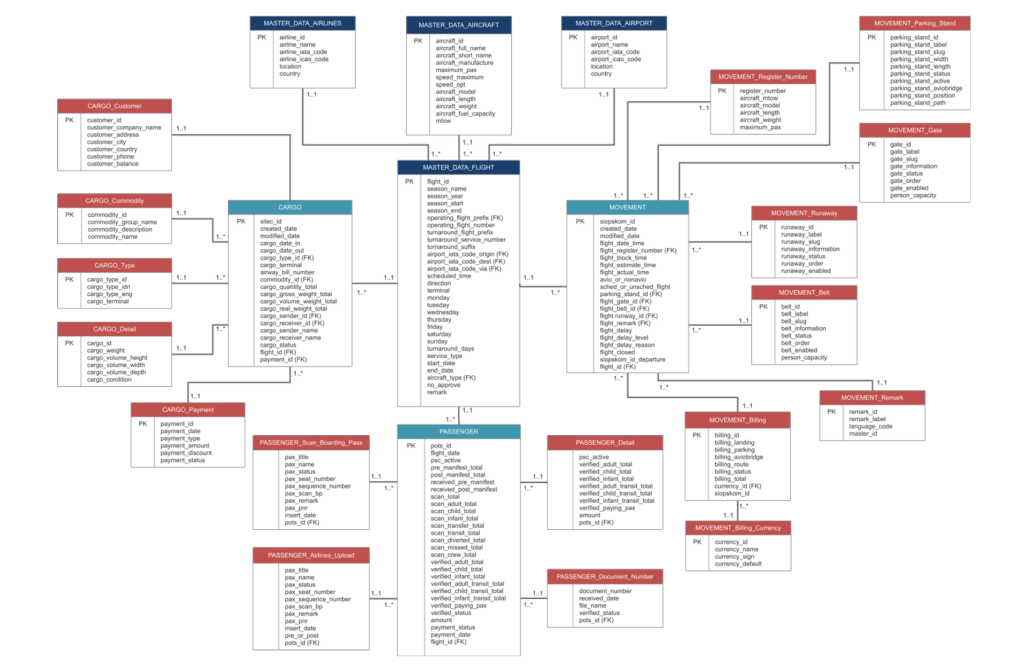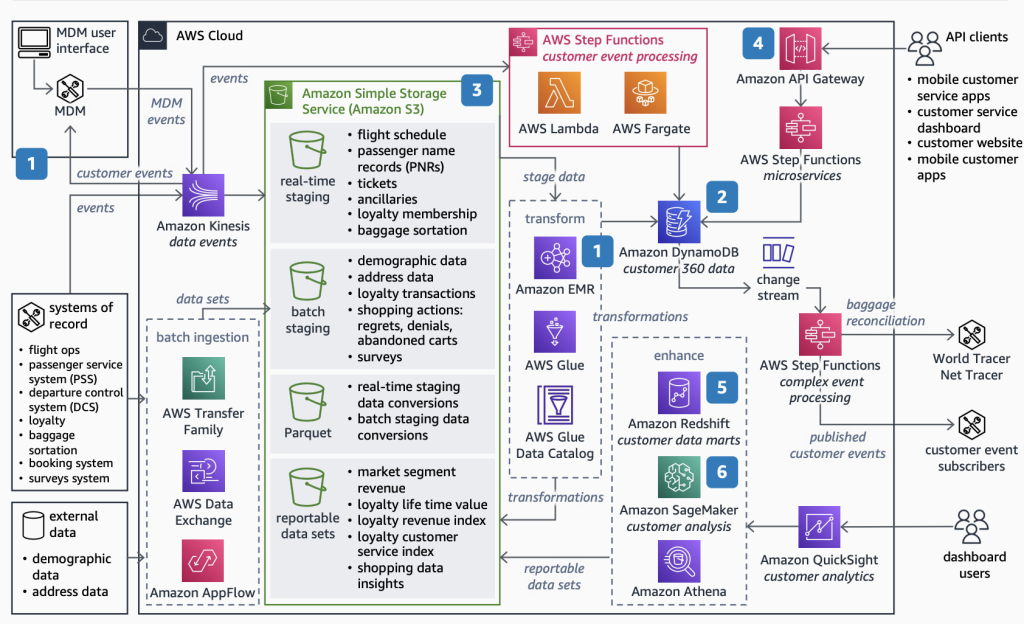Maximizing Aviation Efficiency: MDM Solution for Flight Information Systems
Master Data Management (MDM) has become imperative in today’s complex organizational systems. As businesses grapple with ever increasing data complexities, maintaining consistency and accuracy of master data has become an arduous undertaking. As a technology, MDM solution automates the governance, management, and sharing of sensitive data across applications used by lines of business, brands, departments, and organizations. Acting as providers and regulators of master data, MDM facilitates seamless integration between systems within the organization. The result? Reports and data throughout the company become consistent, while the perennial issue of data duplication is minimized.
Problem Statement
Flight information system is one of the important information for airport management companies. The system generates two main information, namely aeronautical traffic and aeronautical revenue.
These two information are used to find out One Time Performance (OTP) flights at the airport, analysis of airport development planning, improvement of airport facility services, and airport performance measurements. The flight information system consists of several applications including application for recording aircraft movements along with landing, placement and storage services application , application for recording the number of departing passengers and aircraft passenger services application, and application for recording the number of cargoes and billing services for cargo and aircraft services application.
Not only reliable and consistent, the accuracy of the data is needed by top management in making decisions
With the various applications that have been previously mentioned, the flight information system poses problems, the problem that occurs is the existence of flight data with different formats resulting from the use of different databases. In addition the current master data flight is still managed in silo because there are no master data sources yet. This results in differences and duplication in flight data. The existence of various versions of flight data and poor data quality makes users hesitate to determine the source of the data that will be used as a reference to assist flight management activities .

Approach
The approach was to architect the MDM solution for the organization keeping the data coming from data sources aligned in strategy building. Master data will be the main data that will store the all the important information for the business. Master data will be considered as a golden data. The MDM solution will help in following business needs:
- It will help in the search for the business rules, commonly used information and collection of relevant data values in various system in the organization
- It will help in indentification of all the information that lies in different system through centralisation process.
- It will help in uniforming the business models to effectively manage and integrate data from different system
Solution
It defining the solution for the existing system problem various activities were performed during each phase that were “Planning” , “Analysis”, “Design” ,”Development” & “Operationalising”
Planning
Following activities were performed in planning phase:
- Why the need of MDM came into picture? While understanding and identifying the requirements of the master data, thorough analysis was done to identify the root cause of the problem
- Who is the owner of the data? It is very important to identify the decision maker and product stakeholders that play a key role in defining the metrics and strategy for data transformation. Identification of the data flow from the source to the reporting layer was done to understand the original source and role of individuals in maintaining and creation of the data.
- Defined and maintained the data integration architecture. While defining the data integration architecture , Data authorization, Data Replication, Data flow , Metadata management processes were kept in maintain to ensure data consistency.
- Data Collection activity was performed with multiple stakeholder. Various ideation session was performed with key users of the Airport Operations Airside unit, Aeronautical Revenue, Cargo & Aviation Business Supports as the data owner of each application. Airport Engineer Senior Manager as a company data analyst. Business Application Senior Manager as the application manager, as well as the application development team.
Analysis
As per the ideation phase, there were multiple data issues that were reported and need prioritisation in the MDM requirement.
| S.No | Data Issue | Priority |
| 1 | There is a duplication of master flight data in each flight information system | P1 |
| 2 | Changes to the master flight data are carried out in only one system which causes the value to P4 be inconsistent. As a result, daily flights on system often do not appear. | P2 |
| 3 | Frequent data input errors that cause poor data quality are explained by differences in passenger data entered in the system 1 and system . | P3 |
| 4 | The naming of attributes and different data formats between applications. | P4 |
Following steps were planned for design and development phase:
- Identify data that is used frequently
- Identify data that affects the business
- Create standard data integration
- Manage metadata
- Determine data consistency
- Determine data stewardship, data management policies and procedures
Data Source Matrix Creation
Below is the sample data source matrix that was created for the flight operations system
| S.NO | Data | Data Source | Application | User | Format |
| 1 | Scheduled Flight | DS1 | App1 | User 1 | Relational data |
| 2 | Unscheduled flight, airport, airplane,aircraft | DS2 | App2 | User 2 | Relational data |
Design
- Data Flow Diagram: DFD were created to describe business process flight data flow between applications and the users involved.
- Entity Relationship Diagram : Data Flow Diagram (DFD) that have been made was used as a reference to create entity relationship diagrams for master data repository

Implementing MDM on AWS
Amazon Web Services (AWS) data lakes provide an exceptional solution for attaining unparalleled data management excellence by seamlessly capturing and facilitating the availability of high-quality data to analysts in a manner that is both efficient and cost-effective.

- Build data products for relevant domains (like flight, passenger, and loyalty), separating storage from compute.
- Augment the single view of customer data as a service by using an MDM tool to create a customer master. A simple MDM with customer identification and deduplications can also be built using machine learning (ML) transforms in AWS Glue. This ML transformation identifies duplicates in loyalty membership and customers that have not signed up for loyalty membership. This information allows for clearly identifying customers that have significant travel beyond loyalty members.
- In the operational data store, use managed services and purpose- built databases with microservice and event-driven patterns. This enables you to deprecate expensive on-premises infrastructure (like operational databases, service-oriented architecture (SOA) infrastructure, and message-oriented middleware), replacing it with architecture components that allow you to scale based on client adoption.
- Use open standards to build a data lake using the same data as in the operational data platform. Use a read-pattern schema to make the raw data and curated data readily available for all user roles.
- For well-known query patterns, build standard enterprise-datawarehouse schemas and data marts in Amazon Redshift. For ad-hoc query requirements, publish the data catalog in AWS Glue and use Amazon Athena for querying the data lake directly. Extend the data warehouse based on your specific needs.
- Use Amazon SageMaker to provide standard artificial intelligence (AI) and machine learning (ML) models for customer segmentations and lifetime value. Also, use SageMaker to build your own models on top of the data lake.
References
Add Comment
You must be logged in to post a comment.








